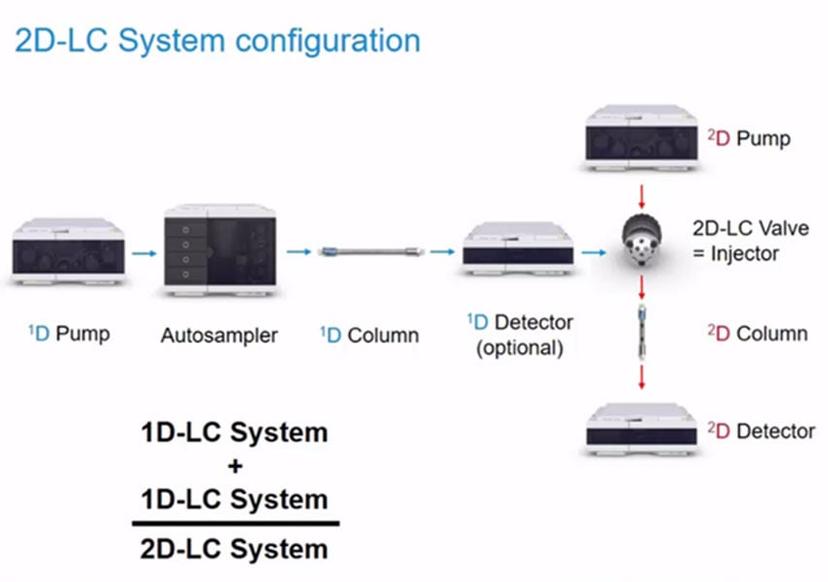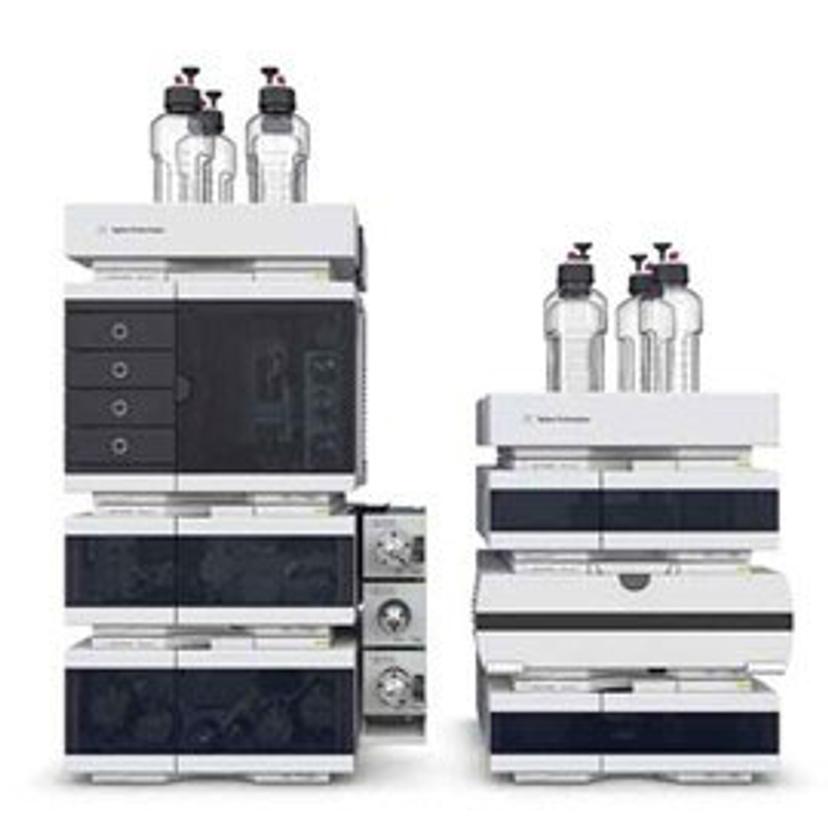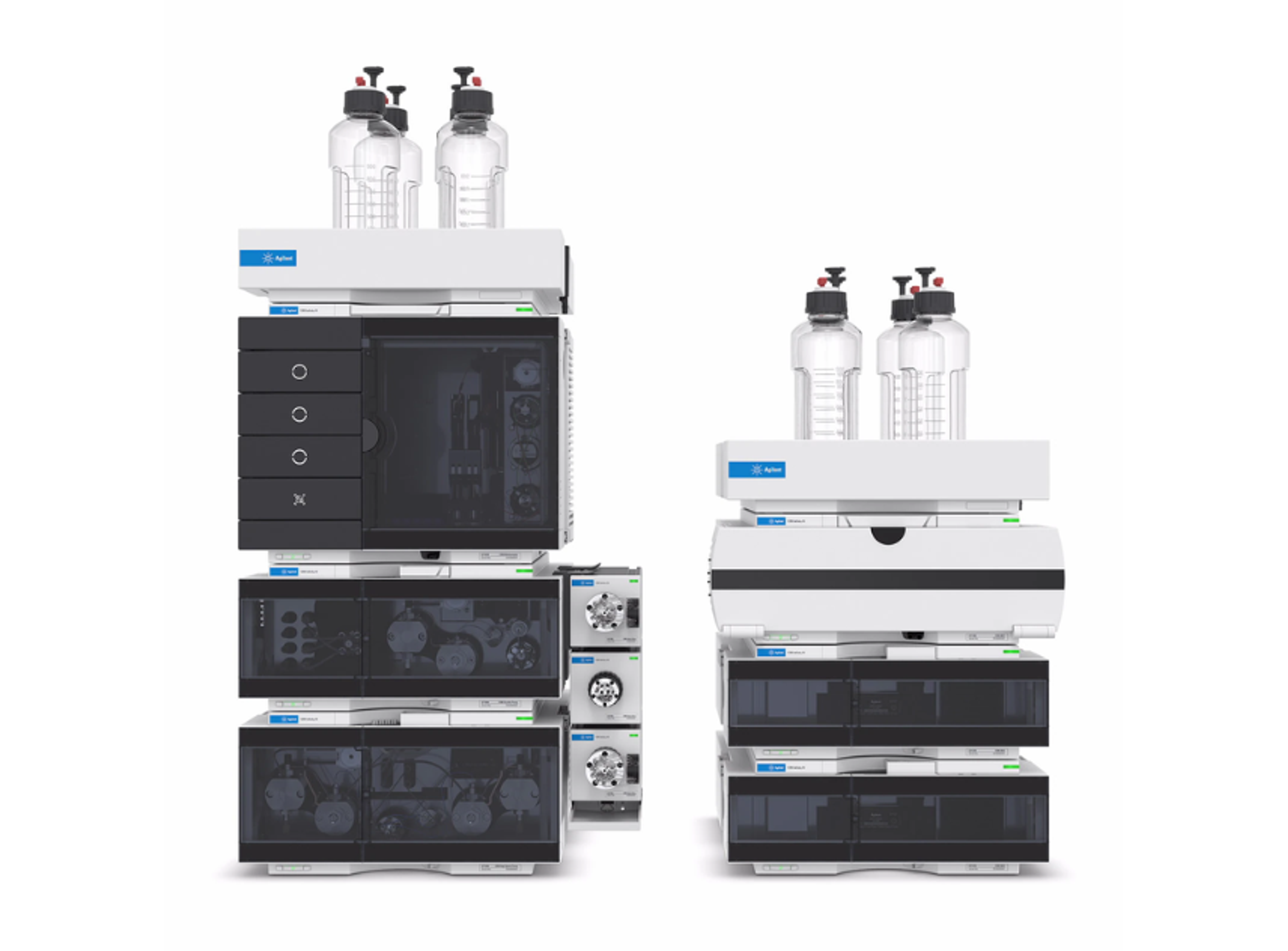Webinar Highlights: Solve Any Separation Challenge Easily with 2D-LC
Chromatography experts share how the latest 2D-LC technology can benefit your pharmaceutical, food, or polymer analysis applications and more
19 Oct 2017

Many samples of medium-to-high complexity can benefit from the separation power of two-dimensional liquid chromatography (2D-LC). Example applications include pharmaceutical and bio-pharmaceutical impurity profiling, all -omics areas, analysis of food matrices, herbal medicine, polymer analysis, flavor analysis and many more.
In a recent SelectScience® webinar, Dr. Ulrich Eberhardinger (UE), product manager and Dr. Susanne Stephan (SS), customer application scientist, both of Agilent Technologies, presented a comprehensive introduction to the latest 2D-LC technology. They also covered examples of applications from different industries that demonstrate the benefits of using 2D-LC for complex separations.
Read on for highlights from the Q&A session or watch the webinar on demand.

Is 2D-LC available for UHPLC?
UE: 2D-LC is an extension of UHPLC and so our 2D-LC systems are based on UHPLC. In the second dimension, you need a high-end system, which is able to deliver fast gradients with low delay volumes and a high-end system architecture which enables control of real-time valve switching, so in the second dimension you are already using a UHPLC system as it is required for the second dimension. For the first dimension, users have the flexibility to choose from different Agilent LC systems, from standard HPLC to high-end UHPLC.
Can I upgrade my existing 1D system to 2D?
UE: Yes, this is possible. We either offer the complete system, which includes all modules and valves needed for 2D-LC as well as software and services or if you already have an Agilent system suitable for 1D - and most of our systems can be used for this - it is also possible to buy an upgrade by adding 2D-LC valves, a 2D pump and the 2D-LC Software. If you would like to use a second detector, e.g. for peak triggering in 1D or for collecting a 1D signal, you would also need a second detector. We know customers like to switch between 1D and 2D, so one day they are using the LC system for 1D operation and, other days, for 2D operations. By using a valve switching solution they can easily switch between 1D and 2D, so you can use the system for both 1D-UHPLC and 2D-LC.

Can you use all the various modes with the Agilent Technologies 2D-LC system, or is the instrument set up differently dependent on mode?
UE: The full system includes multiple heart-cutting valves that can be used for running both comprehensive 2D-LC measurements and multiple heart-cutting and high-resolution sampling measurements. You can also use a reduced set-up that omits the multiple heart-cutting valves; in that case you would only be able to run single heart-cutting and comprehensive 2D-LC.
The set-up for comprehensive 2D-LC only contains one valve with two loops, whereas other modes require three valves, is it necessary to change hardware when changing the mode?
UE: If you have multiple heart-cutting valves installed, you can operate your system in all modes: single heart-cutting, multiple heart-cutting, comprehensive or high-resolution sampling 2D-LC. No hardware change is needed for that. Heart-cutting and high-resolution sampling require a kit with two MHC valves.
Can you combine reverse phase and normal phase chromatography e.g. reverse phase in 1D and normal phase chiral in 2D, or do you need a reverse phase column?
SS: This is a highly desired function because reverse phase and normal phase would be an affordable combination of two columns. You have to be very careful with your method set-up because the solvents have to be miscible - so you won’t be able to mix the aqueous phase and the hexane phase, for example. There are some examples in the literature where people have used dioxane in the normal phase mobile phase and isopropanol in the reverse phase mobile phase - that worked in this case. When you’re especially interested in chiral analysis, there are also columns available for chiral analysis that work with methanol and water gradients, for example. There are application notes available showing this, and with this combination you can also couple a chiral column and a normal reverse-phase column.
When the ASM value is used, how can I know the dilution factor in my sample? Is there any loss in sensitivity due to the dilution of fractions?
UE: There is no loss of sensitivity. In fact, the ASM solution increases the sensitivity because there is enrichment of your sample in the 2D column. This helps to improve both resolution and sensitivity. The best dilution depends on your application: depending on how much you need to dilute your solvent from the first dimension, you can choose different dilution factors. You do so by installing one of the four capillaries which come with the ASM valve. They are suitable for a range of dilution factors between 1.5-5. We recommend starting with a dilution factor of three, which is suitable for many applications, and then using method development to find out if a different dilution factor gives better results for different applications.
One of the application examples showed the determination of the relative amounts of two compounds using high-resolution sampling 2D-LC. Is it also possible to perform an absolute quantification with this method?
SS: Yes, this is also possible, and high resolution helps you here because it transfers complete peaks from 1D to 2D, so you don’t lose any of your sample. This allows a very reliable quantification with 2D-LC. There is an application example for this where quantification of analytes in a sample of interest was performed using an external calibration; this can be done with very good linearity and high reproducibility. When you want to perform calibrations with the Agilent 2D-LC software, this helps a lot because the sum of your 2D peaks can be calculated directly. You can then use the normal features of the Agilent ChemStation software to do your calibration and quantification.
How does Agilent support users with 2D-LC method development?
SS: With every order of the 2D-LC system we include an extensive familiarization service, which demonstrates system capabilities by running checkout methods and helps you to start with the system. We also offer an in-depth two-day on-site application training course to help our customers gain a better understanding of this system and all its benefits. We include pre-defined methods that can give you a start-point when you want to develop a new method for a new separation task. We have a combination of columns which already give you some good orthogonality. For example, the Agilent ZORBAX Eclipse Plus C18 column, which is a reverse phase column, can be used orthogonal to the Agilent ZORBAX Bonus-RP column, and this is a good starting point for developing a new method. Other things that may help are application notes, some of which were shown in this presentation, but there are a lot more showing different separation tasks with different analytes, and so this could also be used as a good starting point for method development in 2D-LC.

What loop volumes are available?
UE: This depends on the mode. For comprehensive 2D-LC and single heart-cutting (HC) 2D-LC, the following loop sizes are available: 20, 40, 60 and 80 µl. For multiple heart-cutting (MHC) and high-resolution sampling (HiRes), the default loop size is 40 µl. Other volumes are available but not recommended. The HiRes mode offers a large flexibility of cut volumes from 4 µl to 320 µl by underfilling loops and creating multiple cuts across broad peaks. This is better than transferring large 1D solvent volumes to 2D at once.
Is there a loop overfill factor to consider?
UE: In MHC-mode, sample loops are typically overfilled (3x recommended). Underfilling is not really possible in HC/MHC mode, as the 1D flow goes through the sample loop continuously and at the end the valve switches. In comprehensive and HiRes mode, sample loops are underfilled. The software calculates and displays the loop filling based on cut settings, sample loop volume and flow rate.
Is there a risk for buffer precipitating in the valve using salts in the first dimension and a more organic phase in the second?
UE: We recommend using compatible solvent combinations, i.e. they should be miscible and chemically compatible. Combining buffers with a high percentage of organic solvent may create precipitation, which of course depends on solvents, concentrations and volumes. A good model is seeing the 2D-LC valve as injector, think of up to 40 µl (heart-cutting mode) sample from 1D being injected into 2D solvent and the 2D column. The ASM valve helps you when doing a dilution before starting the 2D gradient. When creating short cuts using the HiRes mode can also help transferring small amounts of semi-compatible solvents.

